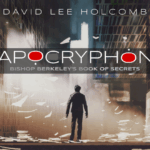Author: David Holcomb
-
What rough beast?
•
Unfortunately, the machinery of governance was big and spooky and dangerous and the only people who knew which…
-
Moody madness laughing wild
•
When things don’t work out, peasants revolt, voters flock to the polls, oppressed minorities throw themselves on the…
-
Midnight Snack
•
Every so often I have a dream that was obviously intended for someone else. Last night’s tour of…
-
Blood on the tracks
•
I am of the age at which I can occasionally begin a sentence with “In my day …”…
-
The Barbarians at the Gates
•
Last Tuesday, in a California courtroom, a judge sentenced 23-year-old Casey Nocket to two years’ probation and 200…
-
Words that Kill
•
In the aftermath of the Pulse nightclub shooting last weekend we’ve seen an outpouring of support and solidarity…
-
Strange Bedfellows
•
“The moment there is a misunderstanding about a boundary line or a hamper of fish or some other…
-
Sweet Poison
•
My grandmother was not a fool. She was, however, a product of her time and her environment, and…
-
Courage
•
Frustrated ISIS militants holding the city of Palmyra yesterday beheaded 82-year-old archaeologist Khaled al-Asaad. When Islamic State fighters…
Recent Posts
Social Media & Email
Sign up for email notifications!
Click here to get on my mailing list for advance info and excerpts from upcoming work and events. Just put “Mailing List” in the subject line.


